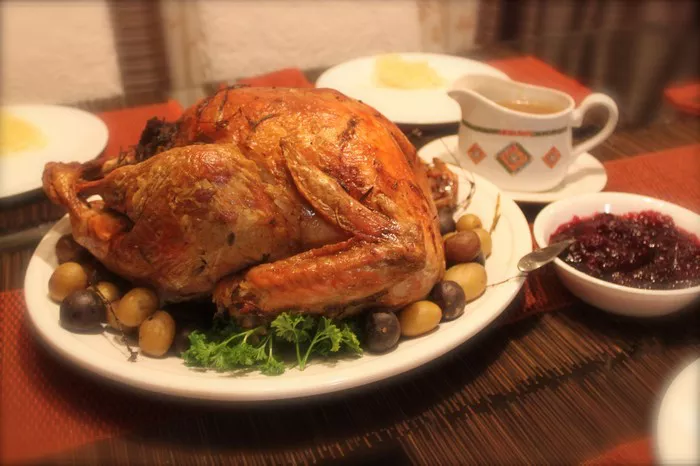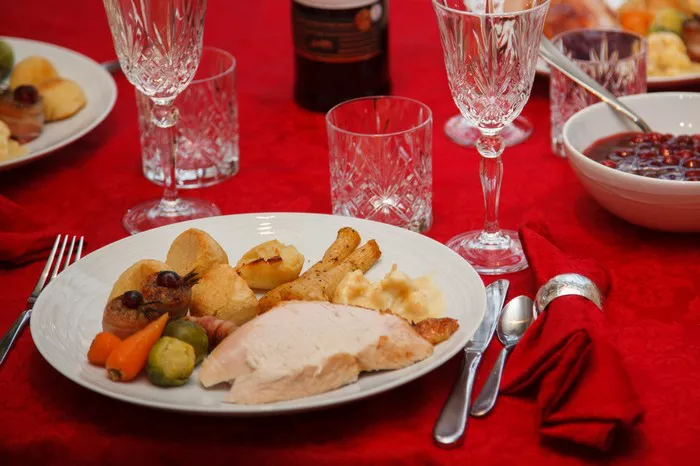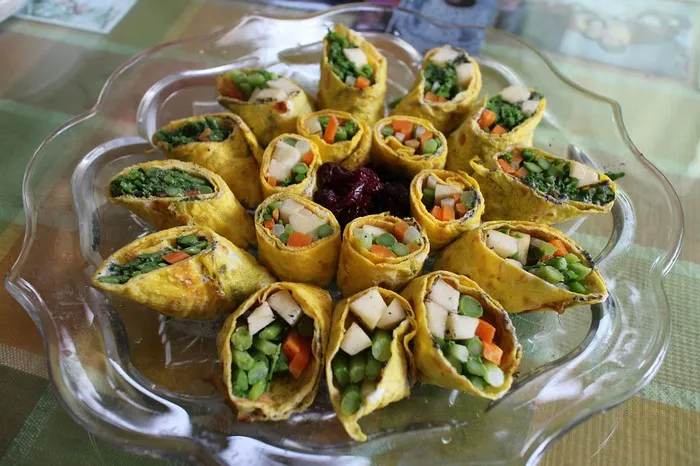Thanksgiving, a time-honored tradition that brings families and friends together in a spirit of gratitude and unity, is often celebrated with a lavish feast that showcases a delectable array of dishes. While the menu may vary from one household to another, there is one dish that stands as the undisputed centerpiece of the Thanksgiving table – the illustrious Roast Turkey. This article delves into the significance of the Roast Turkey as the most common Thanksgiving dish, tracing its history, preparation, and the cherished traditions that surround it.
The Role of Roast Turkey in Thanksgiving
When we think of Thanksgiving, the image of a golden-brown, perfectly roasted turkey often springs to mind. The Roast Turkey has long been revered as the quintessential centerpiece of the Thanksgiving feast, symbolizing abundance, sustenance, and the bounty of the harvest season. Its presence on the table is more than just a culinary delight; it’s a heartfelt representation of the communal spirit that defines this cherished holiday.
The Roast Turkey’s Journey to Prominence
The tradition of serving turkey on Thanksgiving has deep historical roots that date back to the early days of American history. While the exact details of the first Thanksgiving feast in 1621 remain a subject of debate, historical accounts suggest that wild turkeys were indeed part of the culinary offerings shared by the Pilgrims and the Wampanoag people. These early celebrations laid the foundation for the enduring association between turkey and Thanksgiving.
However, it wasn’t until the 19th century that the Roast Turkey truly began to take center stage. With the publication of Sarah Josepha Hale’s influential cookbook “Northwood,” and her tireless advocacy, Thanksgiving became a nationally recognized holiday. The idea of serving a large, roasted turkey as a symbol of togetherness and celebration gained widespread popularity. Over the years, the Roast Turkey solidified its role as the quintessential Thanksgiving dish, adorning tables across the nation with its flavorful presence.
Crafting the Perfect Roast Turkey
While the Roast Turkey’s historical significance is undeniable, its preparation is an art form that demands skill, patience, and a dash of culinary finesse. Creating a tender, succulent, and flavorful turkey requires careful planning and attention to detail. Here’s a step-by-step guide to crafting the perfect Roast Turkey:
Selecting the Turkey: Choose a high-quality turkey that suits the size of your gathering. Consider factors such as the number of guests, cooking time, and personal preferences. Whether you opt for a fresh, frozen, or pre-brined turkey, ensure that it’s properly thawed and prepared before cooking.
Brining or Seasoning: Brining the turkey in a flavorful solution of water, salt, sugar, and aromatics can enhance its juiciness and flavor. Alternatively, you can season the turkey with a dry rub or a blend of herbs and spices to infuse it with aromatic notes.
Preparing the Stuffing (Optional): If you choose to stuff your turkey, prepare a delicious stuffing mixture of bread, vegetables, herbs, and seasonings. Ensure that the stuffing is cooked to a safe temperature to prevent any food safety concerns.
Trussing the Turkey: Trussing, or tying, the turkey’s legs and wings close to the body helps promote even cooking and an attractive presentation.
Roasting the Turkey: Preheat the oven to the recommended temperature (usually around 325°F or 165°C). Place the turkey on a roasting rack in a roasting pan, and brush it with melted butter or oil to promote browning. Roast the turkey, basting it periodically with pan juices, until it reaches a safe internal temperature of 165°F (74°C) when measured at the thickest part of the thigh.
Resting and Carving: Once the turkey is fully cooked, remove it from the oven and allow it to rest for about 20-30 minutes. This resting period allows the juices to redistribute, resulting in a moist and tender texture. Carve the turkey with a sharp knife, and arrange the slices on a serving platter.
Serving and Enjoying: Present the beautifully carved Roast Turkey at the center of your Thanksgiving table, surrounded by an array of complementary side dishes. Invite your guests to savor the flavors, and revel in the warmth of togetherness that defines this special holiday.
A Feast of Traditions
While the Roast Turkey undoubtedly takes the spotlight, the Thanksgiving table is a cornucopia of flavors and cherished traditions. Accompanying dishes, such as cranberry sauce, stuffing, mashed potatoes, gravy, and an assortment of vegetables, contribute to the symphony of tastes that make Thanksgiving an exceptional culinary experience.
Creative Twists and Adaptations
As culinary creativity continues to flourish, some may choose to put their own spin on the traditional Roast Turkey. Creative adaptations, such as turkey brined with unique flavor profiles, herb-infused butter under the skin, or innovative glazes, add a contemporary flair while paying homage to the cherished heritage of this iconic dish.
Conclusion
The Roast Turkey’s presence on the Thanksgiving table is more than a culinary delight; it’s a symbol of gratitude, unity, and the enduring traditions that bind us together. As families and friends gather around the table to share a meal and create lasting memories, the Roast Turkey stands as a testament to the rich tapestry of history and culture that defines Thanksgiving. Whether prepared using time-honored techniques or with a modern twist, the Roast Turkey remains the heart of this cherished holiday, embodying the spirit of abundance and togetherness that makes Thanksgiving a truly special time of year.
























